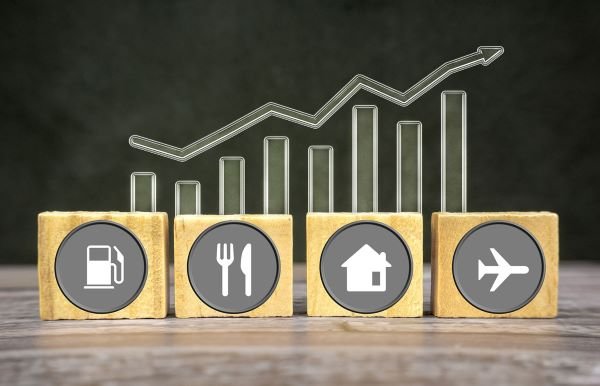The noticeable expansion of your paycheck in recent times is not a mere figment of your imagination. The upcoming inflation report is anticipated to depict further alleviation in the ongoing surge of consumer prices that has strained U.S. households since the commencement of 2021.
Economists are projecting that the annual inflation figure, slated for release on Thursday, will reveal a slight increase of 3.2% in December, compared to the 3.1% recorded the preceding month. The core reading, excluding volatile food and energy items, is expected to decline from 4% to 3.8%, influenced by rising rent and diminishing used car prices.
Despite these improvements, the consumer price index is still expected to remain significantly above the Federal Reserve’s target of 2%. However, an alternative metric, purchasing power, suggests that households have recently regained their pre-inflation financial stability, as indicated by various studies.
Mark Zandi, chief economist of Moody’s Analytics, notes, “It’s pretty clear that people’s income and purchasing power have caught up to inflation.” If this trend persists, it could contribute to a more positive perception of the economy among Americans and potentially enhance President Joe Biden’s chances of reelection.
Purchasing power, in simple terms, refers to how much individuals can afford based on their costs and income. During the surging inflation of 2021 and 2022, wage growth was rising but not at a pace commensurate with the inflation rate, leading to financial challenges for many Americans. By June 2022, with an annual inflation rate of 9.1%, wage increases averaged 5.4%.
The inflation surge was largely attributed to pandemic-related supply chain disruptions, while wages were escalating due to pandemic-induced labor shortages. However, since May, wage growth has consistently outpaced inflation. In November, inflation stood at 3.1%, while hourly earnings increased by an average of 4.1%, according to the Labor Department.
Despite this positive development, it took some time for consumers’ paychecks to catch up to the previous surge in prices. From the first quarter of 2021 to the third quarter of 2023, consumer prices rose by 16%, while wages increased by 12.7%, according to a study by Bankrate analyst Sarah Foster.
However, different measures of purchasing power yield varied results. According to the personal consumption expenditures price index preferred by the Federal Reserve, from March 2021 to November 2023, inflation rose by 13.2%, while average hourly earnings increased by 14%. This suggests that households may have more spending power than before the inflationary period.
The perspective on purchasing power is not uniform, and various factors contribute to the assessment. Personal disposable income, which considers all income sources, also provides a measure of purchasing power. According to Mark Zandi, this metric likely returned to its June 2021 level by December.
The Treasury Department, using another measure, found that inflation-adjusted weekly earnings increased by 1.7% from 2019 to 2023. This implies that a worker earning the median pay of $58,140 in 2023 would have had an extra $1,000 left over if they bought the same goods and services as in 2019.
While the return of household purchasing power to pre-pandemic levels is positive news, Zandi suggests that it falls short of being great. Ideally, income should not merely keep up with inflation but should surpass it, reflecting growth in productivity due to technological advancements or other improvements. In the third quarter, productivity grew by 2.4% annually, the highest in over two years.
Despite the improvements, individuals like Felicia Young, a federal employee from Tampa, Florida, express the need for further reductions in inflation and increased raises to achieve a more comfortable financial position. Young, who experienced rising expenses while receiving modest raises, is cautiously optimistic but feels like she is currently “treading water.”
